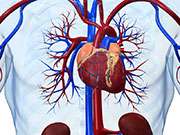Risk score IDs one-year mortality in elderly with NSTE-ACS

(HealthDay)—A risk score involving five covariates can predict one-year mortality risk in patients ≥75 years presenting with non-ST-segment elevation (NSTE) acute coronary syndromes (ACS), according to a study published in the July 15 issue of The American Journal of Cardiology.
Fabio Angeli, M.D., from the Ospedale S.M. Della Misericordia in Perugia, Italy, and colleagues developed and validated a risk prediction score for one-year mortality in patients ≥75 years presenting with NSTE ACS. The derivation cohort included 313 patients with NSTE ACS from the Italian Elderly ACS trial and the validation cohort included 332 patients with NSTE ACS who met the trial inclusion criteria but were excluded from the trial. Five statistically significant covariates were included in the risk score: previous vascular event, hemoglobin level, estimated glomerular filtration rate, ischemic electrocardiographic changes, and elevated troponin level.
The researchers found that the score exhibited good discriminating power (C statistic, 0.739) and calibration, even among gender- and age-defined subgroups. The scoring system confirmed a strong association with risk for all-cause death when validated in the test cohort. Patients more likely to benefit from an invasive approach were identified by a score of ≥3 (highest baseline group).
"The risk for one-year mortality in patients ≥75 years of age with NSTE ACS is substantial and can be predicted through a score that can be easily derived at the bedside at hospital presentation," the authors write.
More information:
Abstract
Full Text (subscription or payment may be required)
Copyright © 2015 HealthDay. All rights reserved.


















